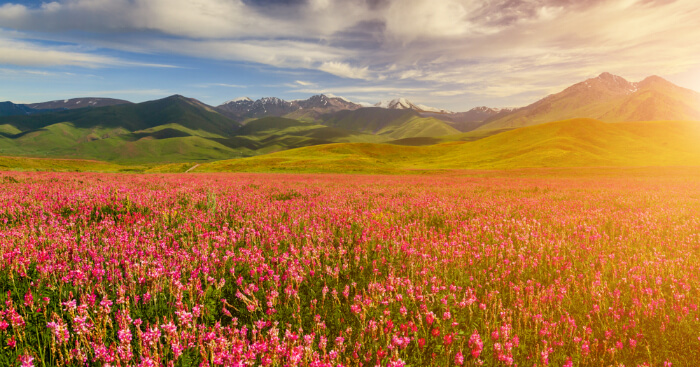
Fondly and proudly known as “Devbhumi”, Uttarakhand is a magnificent state in North India. This state is famous for religious significance, pilgrimage sites and ethereal natural beauty. The whole region will leave you awestruck. The diverse flora and fauna in Uttarakhand is intriguing and breathtaking to say the least. Consequently, one of the state’s main attractions is a UNESCO World Heritage Site – The Valley Of Flowers National Park. Let’s take a close look at this splendid gift of mother nature.
Discovery of The Valley Of Flowers
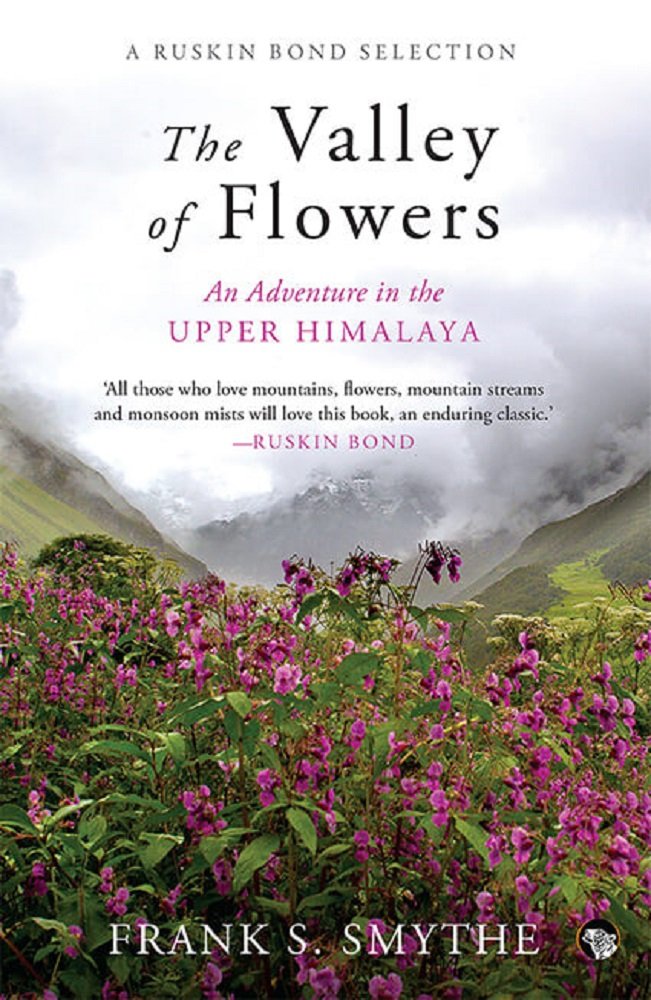
The exquisite Valley of Flowers was unknown to the world for a long period of time. However, in 1931, a British Mountaineer by the name of Frank Smythe lost his way while returning from a trek to Mt.Kamet with his companions. His friends and he happened to stumble upon the valley as a result of their predicament. This group of Instantly attracted by the exquisite flowers in the region, this group of mountaineers went on to name it “Valley of Flowers”. Later, Frank Smythe went on to author a book named after the valley. There on, several botanists and researchers made their way to this alluring valley. The floral and fauna of the region saw many inspections and examinations. The Valley Of Flowers was then made a National Park in 1980.
Geography & Accessibility
The Valley Of Flowers is situated in the Pushpawati River Valley, in Garhwal, Uttarakhand. It lies 20 km North of Nanda Devi National Park and is one of the tow hanging valleys in the Bhyundar valley. The valley is 15 km long and 6 km wide and a tributary of the Pushpawati river flows through it.
The best time of the year to visit this valley is between June and early September. During this period the valley is blooming with flowers and looks extraordinary. The 17km trek to the Valley Of Flowers begins at Govindghat. Visitors can reach this commencement point from Joshimath which is the closest town to the valley. Joshimath is easily accessible from Dehradun and Haridwar. Tourists from outside Uttarakhand can take a train from Delhi to Haridwar and then a bus ride to Govindghat. Further on, from Govindghat people can opt for a shared taxi, porter, mule or helicopter to reach Ghangaria – a small settlement 3km from the valley. The forest department at Ghangaria hands the visitors a 3 day permit to the valley. Entry tot the enchanting Valley Of Flowers is open only during the day. Accommodation for visitors is available at Ghangaria.
The Marvelous Flora & Fauna At The Valley Of Flowers
This remarkable gift of nature is home to numerous plants and animals. Several of these are also exclusive to this region and considered threatened. Its dense coverage of diverse Alpine flora is the prime attraction. Over 600 species of exotic flowers like orchids, poppies, primulas, marigold, daisies and anemones bloom here. It also encompasses a wide range of medicinal plants. Furthermore, sub-alpine forests of Birch and Rhododendron blanket parts of the region.
Albeit not a vast range, the fauna in the valley is considered endangered. Here are some of the popular species in the valley – The Northern Plain Gray Langur, Red Giant Flying Squirrel, Himalayan Black Bear, Red Fox, Himalayan Weasel, Lime Butterfly, Himalayan Monal, Yellow-Throated Marten, Himalayan Goral, Himalayan Musk Deer, Indian Spotted Chevrotain, The Himalayan Tahr and Serow Moreover, most of the birds and reptiles in the region are exclusively found in the valley.
Conclusion
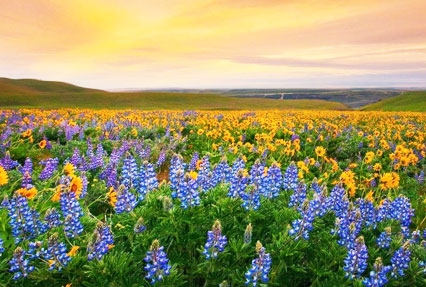
The Uttarakhand State Forestry Department conserves and administers The Valley Of Flowers. A research nursery and seed bank have also been set up. This nursery aims at propagating and preserving rare species of plants and medicinal herbs. The magnificent Valley of flowers is an astounding marvel of nature. Moreover, setting out on this trek is a wholesome and enriching experience. The stunning scenery of the lush and colourful flowers is unbelievably sensational. We have to say that a visit to the Valley Of Flowers in Uttarakhand is a must! Make sure to tick this trip off your list soon.



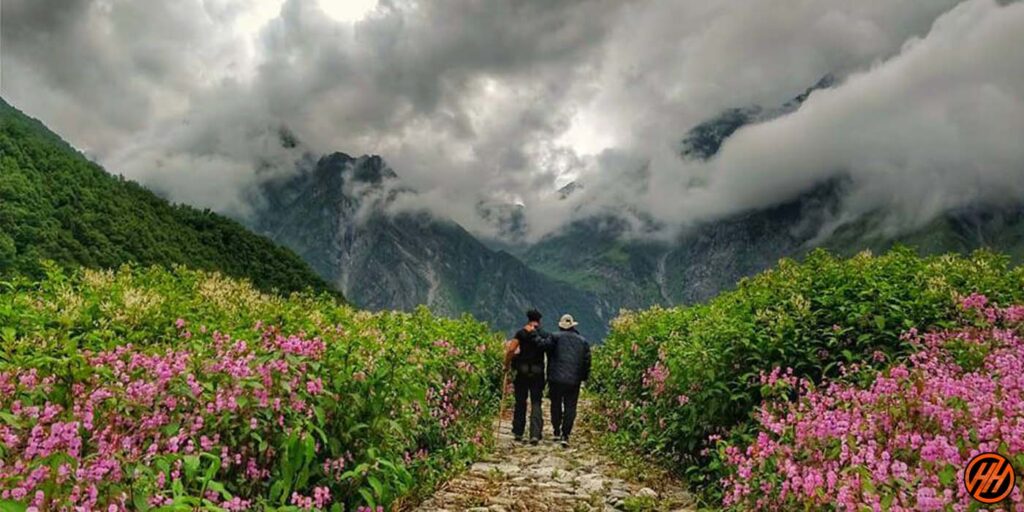
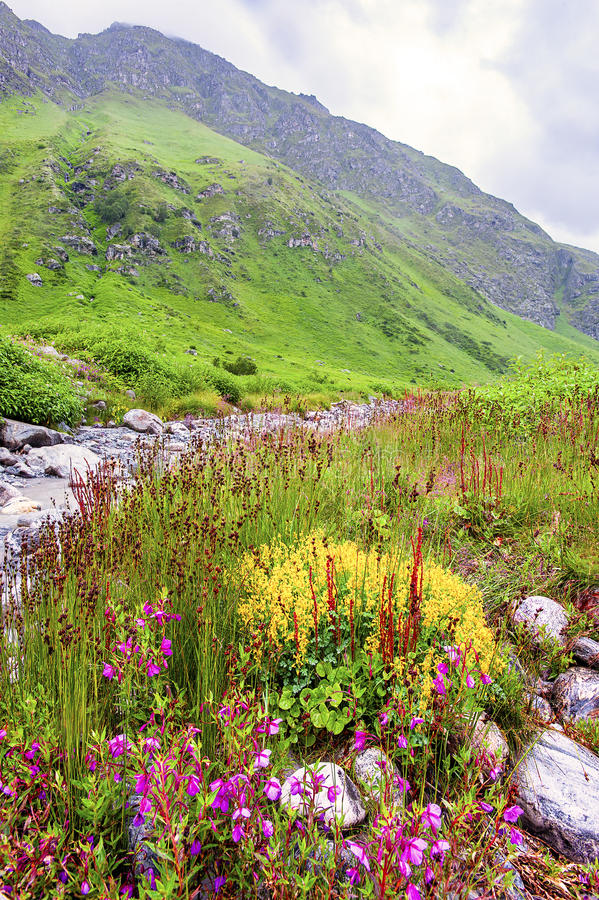





7 Comments